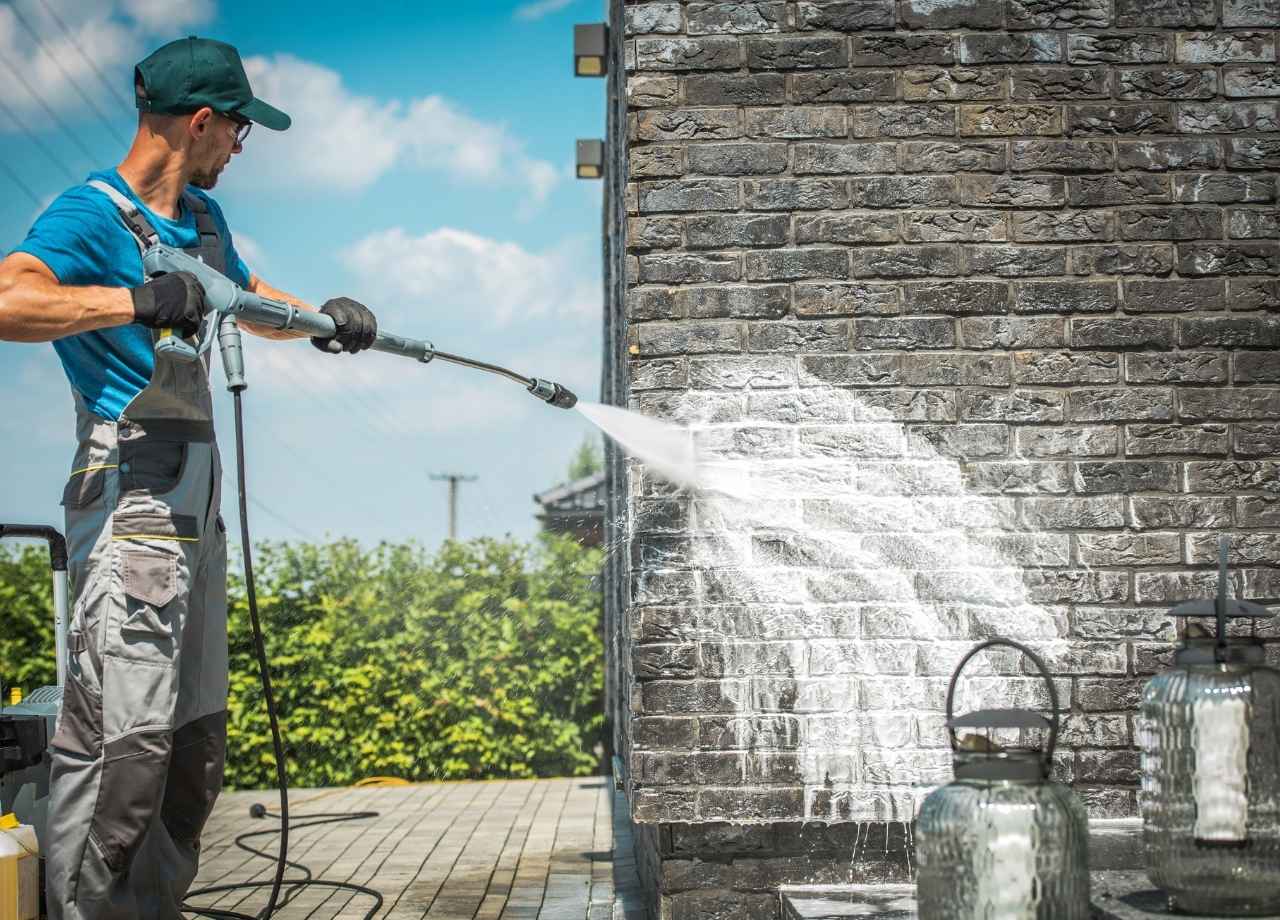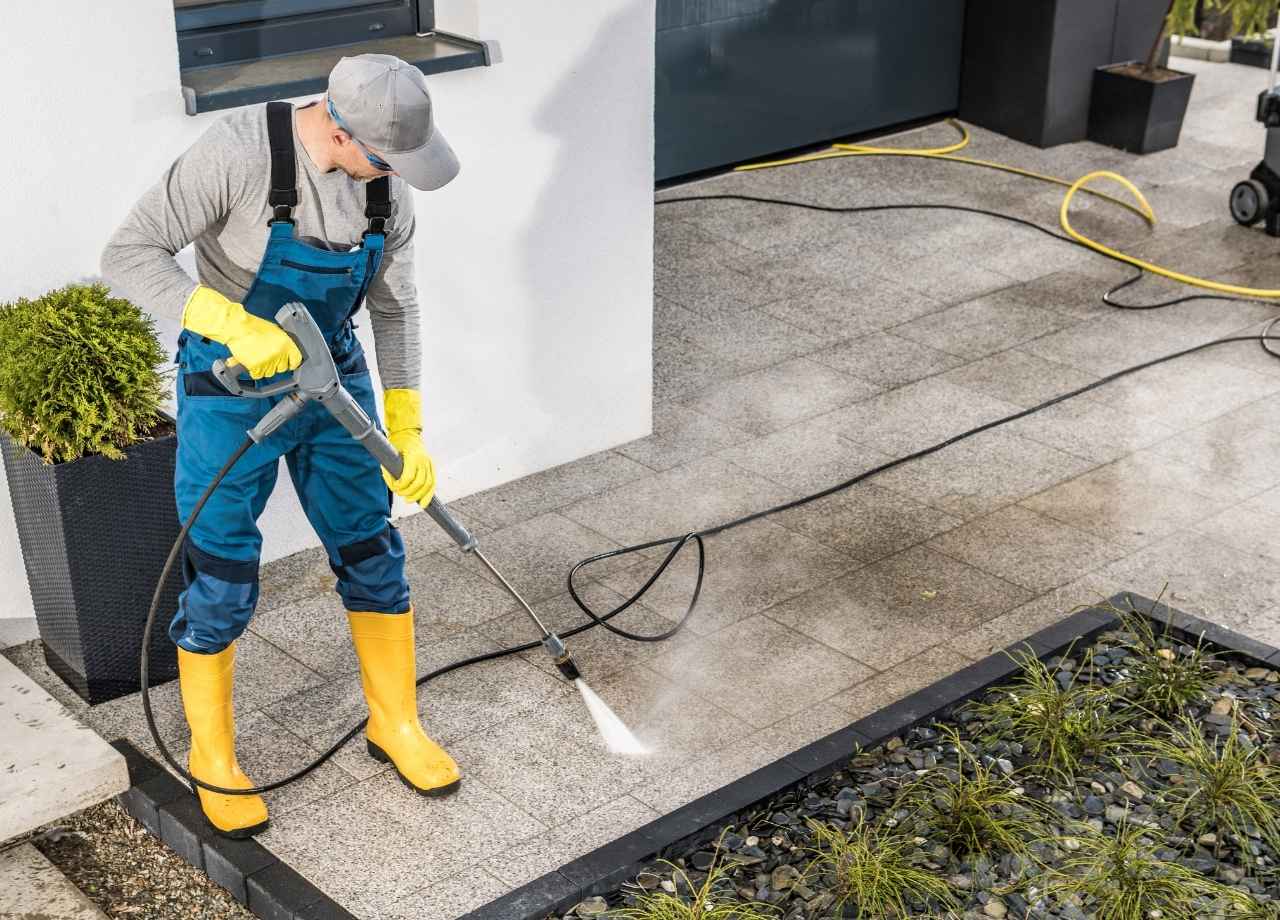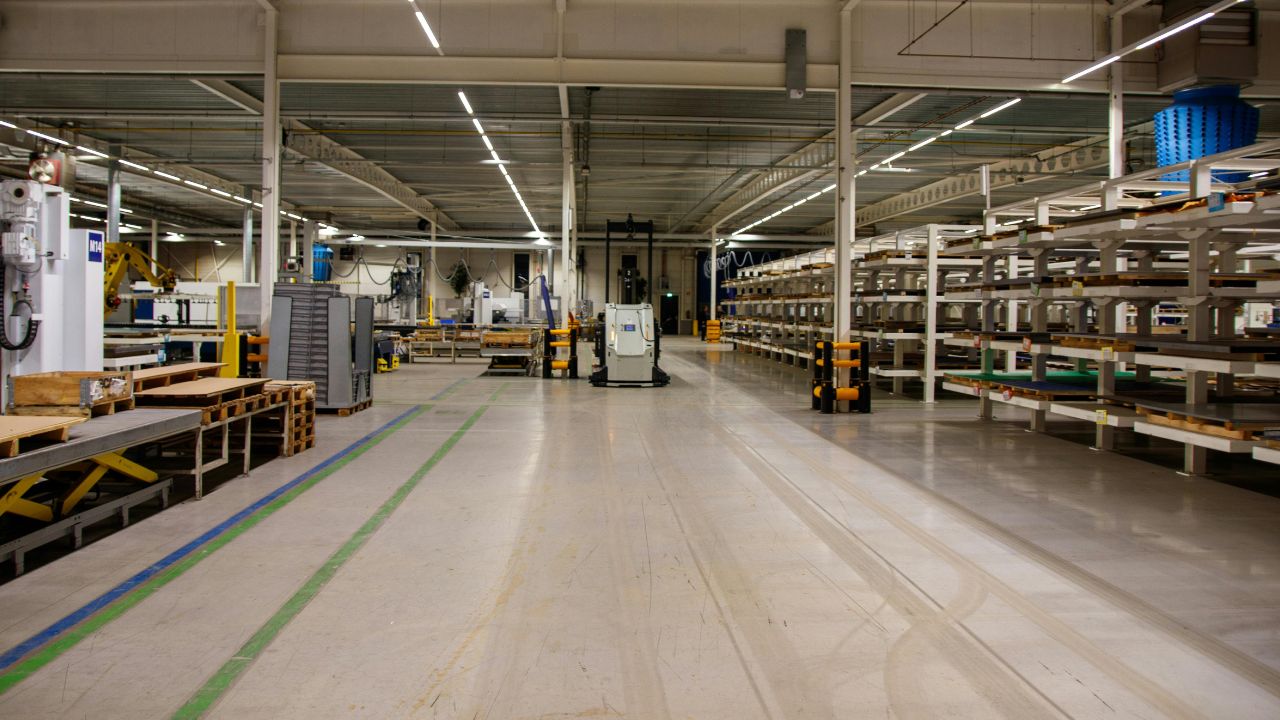Power vs Pressure Washing for Commercial Facilities
Maintaining the exterior of commercial properties goes far beyond curb appeal—it’s about protecting surfaces, reducing liability, and supporting your brand’s reputation. Dirt buildup, grease stains, mold, and contaminants don’t just signal neglect—they create slip hazards, accelerate surface wear, and often trigger costly repairs that could’ve been avoided.
Two of the most common techniques used to clean commercial properties are power washing and pressure washing. While they sound similar, each method has different strengths—and risks—depending on the type of surface and the level of buildup.
This guide walks through the differences, best-use scenarios, and common pitfalls of power and pressure washing, helping facility teams choose the right approach for their properties.
Understanding the Difference
The core distinction is simple:
- Power washing uses heated water under high pressure. The heat helps break down tough substances like grease, chewing gum, and stuck-on grime. This makes it ideal for cleaning surfaces that need more than just water pressure—like dumpsters, commercial kitchens, or grease-stained parking areas.
- Pressure washing relies solely on high-pressure cold water. It’s effective at removing surface-level dirt, dust, and light mold from sturdy materials like concrete, brick, or metal siding. It’s also better suited for more delicate surfaces where heat could cause warping or damage.
Both methods use specialized equipment and require careful handling. Choosing the wrong one can result in cracked surfaces, stripped paint, or etched concrete.
Choosing the Right Method for the Surface
Different materials respond differently to pressure and heat. What works well for one area could damage another if not applied correctly.
Concrete Walkways and Sidewalks
- Power washing is effective at removing oil stains, embedded dirt, and gum. The heat breaks down residue that cold water alone can’t handle.
- Pressure washing is best for regular upkeep when heavy buildup isn’t present. It helps maintain appearance without being too aggressive.
For aged or weakened concrete, care must be taken with both methods to avoid surface erosion.
Building Exteriors: Brick and Siding
- Pressure washing is typically the safer choice. When done with moderate PSI, it can clean dust, spider webs, and surface mildew without harming older mortar or siding.
- Power washing may be appropriate for heavily soiled brick, but excessive heat can damage vinyl siding or loosen paint. A low-pressure setting with a mild detergent is often the safest approach for painted or delicate surfaces.
Waste and Dumpster Areas
- Power washing is preferred due to its sanitizing capabilities. The heat helps kill bacteria and neutralize odors, which is essential in areas where food waste or spills are common.
- Pressure washing can remove surface dirt, but it’s often not enough to fully sanitize or eliminate deeper grime in these zones.
Parking Lots and Driveways
- Power washing excels at dissolving grease, oil drips, and tire marks. This makes it the go-to method for high-traffic areas prone to automotive residue.
- Pressure washing is fine for lighter cleaning tasks, like seasonal upkeep or removing dust and leaves.
Surface cleaners are often used to maintain even pressure and avoid streaking during both methods.
Wooden Decks and Outdoor Seating
- Pressure washing is safe when used with care. A controlled PSI with a fan-tip nozzle prevents splintering or gouging.
- Power washing is generally avoided for wood due to the risk of warping and heat damage. In most cases, combining low-pressure washing with a wood-safe cleaner yields better long-term results.
Managing Mold and Mildew
Mold and mildew are common around shaded areas or spots with poor drainage. Not only do they degrade appearance, but they also create slippery surfaces and potential health risks.

- Power washing kills mold more effectively because the heat penetrates deeper into porous surfaces like concrete or stone.
- Pressure washing removes surface-level growth but may leave spores behind unless paired with mold-inhibiting cleaners.
Choosing the right technique here isn’t just about visual results—it’s about preventing regrowth and reducing safety risks.
Environmental Impact and Wastewater
Both power and pressure washing create wastewater that may contain oil, detergents, bacteria, or paint flakes. That water can’t be allowed to drain into public storm systems unchecked.
Best practices include:
- Using biodegradable, low-toxicity cleaning agents when possible
- Installing wastewater filtration systems or water reclaim units
- Diverting or collecting runoff to comply with local discharge regulations
Facilities near environmentally sensitive areas—or those governed by strict municipal codes—must take extra care with how washing is handled.
Safety and Training Considerations
High-pressure water is no joke. Improper use can cause surface damage, injuries, and liability claims.
Best practices for operator safety include:
- Wearing eye protection, gloves, and slip-resistant footwear
- Choosing appropriate PSI and nozzles for each surface
- Being trained in fall protection when working on elevated platforms
- Ensuring walkways are blocked off or marked during active washing
Multi-story buildings or high-traffic properties may also require aerial lifts or scaffolding, which must be operated by certified personnel.
Cost Factors and Scheduling
- Power washing tends to cost more due to fuel consumption (for heating water) and the use of higher-end equipment. However, it can complete certain jobs more efficiently—especially when cleaning greasy surfaces or sanitizing waste areas.
- Pressure washing is less expensive and ideal for routine maintenance. However, heavily soiled areas may require multiple passes, increasing labor time.
The most cost-effective strategy often involves using power washing where it’s most needed, and pressure washing for general upkeep—especially when both services are scheduled strategically throughout the year.
Common Mistakes to Avoid
Whether in-house or outsourced, improper washing can lead to permanent damage or repeat cleanings.
Avoid these pitfalls:
- Using high PSI on fragile materials like wood, older brick, or painted surfaces
- Skipping pre-treatment with detergents on greasy areas, which leads to poor results
- Overheating vinyl siding or sealed surfaces with a power washer
- Failing to block off nearby areas, leading to overspray on windows or entrances
- Ignoring runoff, which can stain nearby walkways or trigger fines
Finally, don’t overlook post-cleaning inspections. Missed spots, pooled water, or detergent residue can undo an otherwise successful job.
When it comes to maintaining commercial properties, facility leaders need more than just the right equipment—they need a clear, surface-specific plan. That’s why experienced partners like National Facility Contractors are often brought in: not just for the execution, but for the knowledge of when, where, and how to apply the right technique without causing unintended damage or disruption.
Conclusion
The choice between power washing and pressure washing comes down to what you’re cleaning, how sensitive the surface is, and what you’re trying to remove. Power washing is the heavy lifter—ideal for grease, bacteria, and sticky buildup. Pressure washing is best for lighter cleaning jobs and more delicate materials.
Done right, both methods can extend the life of your surfaces, improve safety, and enhance your property’s appearance. Done wrong, they can lead to surface failure, water damage, or regulatory violations.






